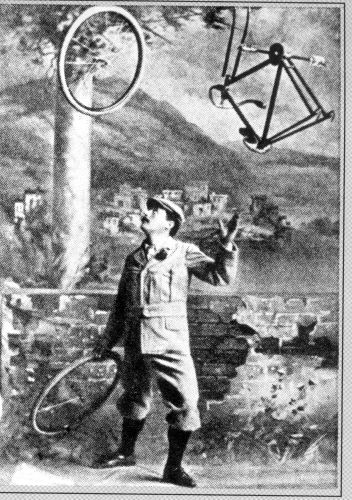|
The
turn of the 20th century represented a significant change in
the art of juggling, with many artistes changing their
costumes and juggling props. Jugglers of old wore
multicoloured shimmering
tights
to give their balls and plates a brilliant, gleaming and
colorful background. But the artistes themselves often looked
dubious against such elegance and glitter. Many were poorly
educated and trained, and did not know how to move about the
stage. Consequently, their craft did not receive much
recognition from high society.
But
in the late 1800's jugglers exchanged traditional costumes for
a dinner suit or sports uniform, and used props like walking
sticks, top hats, candles and balls.
The
increasing popularity of sports led many to wear uniforms and
turn their stages into a sports field. Among them was the
American Bilton, who was in 1874 the first to travel with his
own stage decoration. It took the form of a tennis court on
which Bilton manipulated tennis balls, rackets and a net.
Morie
appeared as "The Original Tourist Juggler" with a
bicycle (two wheels and a frame) which he performed on and
with. Hanvarr, "Juggling on the Lawn," worked with
tennis rackets, hat and ball, while Felix and Co. adopted a
scene "On the Golf Course." The Russian artistes
Xenia and Michael Patschenko, as well as the Germans Joe
Martin and Miss Lona, and the three Trapnell Sisters were
among those who adopted this style about
1900.
Alberto
Alfonso, who made a name for himself as a comical juggler in
Germany about 1885, followed the trend. He balanced a wash
bowl containing dancing Bengali fireworks on a bamboo cane. At
the same time he juggled bottles and a chair, his jacket and
billiard cues.
Two
groups adopted a kitchen scene -- The Spoons performing a
juggling pantomime and E.F. Strakay working with a stove,
plates and "dancing bowls."
|

